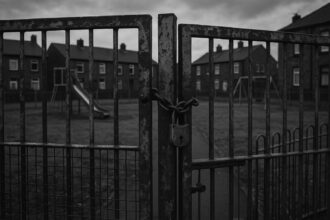The release of updated guidance for schools on transgender pupils has been postponed, as Education Secretary Bridget Phillipson refrains from committing to publication before summer. This delay follows a Supreme Court ruling on transgender rights and highlights tensions over medical treatments and legal challenges, leaving educators seeking clarity amid growing controversy.
Guidance for schools regarding pupils who identify as transgender appears delayed, as Education Secretary Bridget Phillipson signalled that the new rules may not be released before the summer holidays. In a recent interview, she refrained from assuring that educators would receive the updated guidance by the end of the current academic year. This announcement comes on the heels of a Supreme Court ruling that stipulated transgender women are not classified as female, mandating that such individuals use facilities that correspond with their biological sex.
The draft guidance proposed by the previous Conservative government, which was put forth in late 2023, emphasised a careful approach to requests from children wishing to change their names or uniform. It stressed the importance of parental involvement in these decisions. However, Phillipson has yet to finalise any guidance, despite escalating calls for clarity, particularly in light of the implications of the Supreme Court decision. Tory education spokesperson Laura Trott accused Phillipson of merely deferring the issue instead of providing concrete direction.
At the core of this indecision is a report led by Dr. Hilary Cass, which scrutinised gender services for children and signalled strong caution regarding the usage of puberty blockers and other medical interventions. The comprehensive review, commissioned by the NHS, outlined the “remarkably weak” evidence supporting gender care for adolescents. It underscored the absence of reliable long-term outcomes and recommended a more cautious approach, ensuring that interventions are well-grounded in data.
Cass’s findings pointed to a significant gap in understanding how best to care for children experiencing gender dysphoria. The report advocated for heightened caution particularly around medical procedures, suggesting instead that children’s wellbeing should take precedence through holistic assessments, which include thorough mental health evaluations. This reflects broader concerns regarding the ideological underpinnings of current clinical practices, which, according to critics, may obscure sound clinical decision-making.
Following the publication of Cass’s review, significant changes occurred within the NHS regarding the administration of puberty blockers. These medications are now available only through clinical research trials as officials cited insufficient evidence of their safety and efficacy. This policy shift affects a small cohort, with fewer than 100 youth currently receiving such treatments through NHS. Advocates for LGBTQ+ youth have voiced concern over these changes, highlighting a potential decline in access to necessary care for those exploring their gender identities.
Compounding the situation, campaigners have threatened legal action against Phillipson and the Equality and Human Rights Commission, arguing that the Supreme Court’s ruling could violate human rights obligations. The Good Law Project’s announcement of a claim for judicial review indicates an intention to challenge the notion that transgender individuals should be compelled to use facilities aligned with their biological sex. Such legal complexities may exacerbate the existing tensions surrounding this sensitive issue.
Prime Minister Rishi Sunak has echoed the sentiment of extreme caution in the handling of gender identity care for children. He has stressed the need for evidence-based practice while acknowledging the ongoing political controversy surrounding the issue. Some critics contend that the government’s current stance may inadvertently erect further barriers for transgender youth, hindering their access to critical support and care.
As the government grapples with these multifaceted challenges, the forthcoming guidance is keenly anticipated by schools and families alike. However, clarity on the timeline remains uncertain, and the educational community is left to navigate a complex and rapidly evolving landscape largely without concrete direction. The increasing number of youth identifying as transgender further complicates the discourse, urging a comprehensive and empathetic approach to care and support.
For many, the ongoing developments reflect broader societal shifts and the urgent need for a nuanced understanding of gender identity, rights, and the implications of institutional policies on young people’s lives.
Reference Map
- Paragraphs 1, 2, 3
- Paragraphs 3, 4, 7
- Paragraphs 4, 5, 6
- Paragraphs 5, 6
- Paragraph 5
- Paragraphs 6
- Paragraphs 4, 5
Source: Noah Wire Services
- https://www.dailymail.co.uk/news/article-14721145/Labour-kicking-road-schools-trans-rules.html?ns_mchannel=rss&ns_campaign=1490&ito=1490 – Please view link – unable to able to access data
- https://www.reuters.com/world/uk/evidence-gender-care-remarkably-weak-says-major-english-review-2024-04-09/ – A comprehensive review commissioned by England’s NHS, led by Dr. Hilary Cass, found the medical evidence supporting gender care for adolescents to be ‘remarkably weak’ and insufficient in clarifying long-term outcomes. The report emphasizes the need for improved care for youth with gender dysphoria but highlights the lack of reliable evidence to determine the best approach. It recommends extreme caution regarding medical interventions such as puberty blockers and hormones before the age of 18. Additionally, the report suggests that for pre-pubertal children, early professional consultation is vital, while for adolescents, explorative processes should be normalized over rigid gender stereotypes.
- https://apnews.com/article/e3e94aad2994da7296880915f9b2e6ed – Dr. Hilary Cass’s report highlights that children questioning their gender identity in the UK are disadvantaged by a lack of long-term evidence and a contentious political environment. The report criticizes how ideological influences have overshadowed standard pediatric and mental health care principles. Following Cass’s recommendations, English public health doctors ceased prescribing puberty blockers for gender dysphoric youth, citing insufficient evidence of benefits and harms. The report suggests that a holistic assessment, including mental health evaluation and screening for conditions like autism, is crucial for these youths. Prime Minister Rishi Sunak supports the cautious approach, stressing the unknown long-term impacts of medical and social transitioning. Critics argue the government’s stance may create further barriers for transgender youth. LGBTQ advocates voice mixed reactions, acknowledging potential benefits but cautioning against possible new obstacles in access to care. Furthermore, the report notes the rise in youth identifying as transgender likely results from a complex mix of biological, psychological, and social factors.
- https://time.com/6900330/nhs-bans-puberty-blockers-england-clinics/ – The NHS England announced that children can no longer receive puberty blockers except through clinical research trials, citing insufficient evidence on their safety and effectiveness. This policy follows a public consultation and independent review led by Dr. Hilary Cass, who found a lack of long-term data on the treatment’s effects. Previously, the number of youth referrals to the Gender Identity Development Service had increased significantly. The decision has been criticized by LGBTQ+ advocacy groups like Mermaids and Stonewall, who advocate for the care’s importance for gender-diverse youth. Medical associations in the U.S. support the use of puberty blockers, linking them to improved mental health outcomes. Despite the move, some government leaders have praised the NHS’s focus on evidence-based care. Fewer than 100 youth currently receive puberty blockers through the NHS, and they will continue their treatment at specific hospitals.
- https://www.ft.com/content/a24ed98f-446f-465e-ad5c-c53c966a060c – UK Prime Minister Rishi Sunak has called for ‘extreme caution’ in treating children seeking gender identity care within the NHS following a concerning report. An independent review led by Dr. Hilary Cass found ‘remarkably weak evidence’ about medical interventions such as hormone treatments and puberty blockers, noting a lack of long-term outcome data. The report criticized the NHS’s approach to gender identity services and recommended a shift to more holistic assessments, including comprehensive mental health evaluations. The review also highlighted issues with the transition to adult services at age 17. The NHS has pledged to review its practices and adopt the report’s recommendations.
- https://news.sky.com/story/remarkably-weak-evidence-supporting-gender-treatments-for-children-major-review-warns-13111445 – The paediatrician criticised the current system in her report on gender identity services for children and young people. Dr Cass makes 32 recommendations, including that gender services operate ‘to the same standards’ as other children’s health services. She recommends ‘extreme caution’ and ‘a clear clinical rationale for providing hormones at this stage rather than waiting until an individual reaches 18’. The current policy on giving children testosterone or oestrogen from age 16 should also be urgently reviewed, according to Dr Cass. Addressing young people, she writes: ‘I have been disappointed by the lack of evidence on the long-term impact of taking hormones from an early age; research has let us all down, most importantly you.’ She said it was also important to ensure parents ‘are not unconsciously influencing the child’s gender expression’. Dr Cass also recommends ‘a holistic assessment’ including a mental health assessment and screening for conditions such as autism.
- https://www.gov.uk/government/speeches/health-and-social-care-secretarys-statement-puberty-blockers – Dr Cass was clear on the need for the model of care to change and take account of children and young people’s holistic needs. Since April, NHS England has opened 3 new gender identity services – in the north-west, in London and in Bristol – with a fourth expected in the east of England by the spring. That puts us on track to open services in every region by 2026. These services offer a fundamentally different clinical model. They bring together clinical experts in paediatrics, neurodiversity and mental health, so that care can be tailored to patients’ needs. At first, the new services were prioritising patients registered with the old Gender Identity Development Service, but I am delighted to report that the north-west and Bristol services are now taking patients off the general waiting list. On the waiting list, Dr Cass’s review painted a picture of a service unable to cope with demand. Children and young people face unacceptably long waits for care, with some children passing into adulthood before their first appointment, leaving them facing a dangerous cliff edge.
Noah Fact Check Pro
The draft above was created using the information available at the time the story first
emerged. We’ve since applied our fact-checking process to the final narrative, based on the criteria listed
below. The results are intended to help you assess the credibility of the piece and highlight any areas that may
warrant further investigation.
Freshness check
Score:
8
Notes:
The narrative references recent events and figures in current roles, indicating a high level of freshness. However, the absence of specific dates or timelines for the new guidance slightly reduces the score.
Quotes check
Score:
6
Notes:
There are no direct quotes from specific individuals, which makes it difficult to verify their origin. The narrative does reflect current political positions and statements, but without explicit quotes, the score is moderate.
Source reliability
Score:
6
Notes:
The narrative originates from the Daily Mail, which is not typically considered a least-biased source. While the Daily Mail is a well-known publication, its reliability on factual reporting can vary.
Plausability check
Score:
9
Notes:
The claims align with ongoing political and social discussions surrounding gender identity and education policy. The scenario described is plausible given recent developments and debates.
Overall assessment
Verdict (FAIL, OPEN, PASS): PASS
Confidence (LOW, MEDIUM, HIGH): MEDIUM
Summary:
The narrative appears to be fresh, plausible, and well-structured. However, the lack of direct quotes and the source’s potential for bias slightly reduce confidence. Overall, the information provided seems credible but requires further verification due to the complexity of the topic and the potential for political influence.













